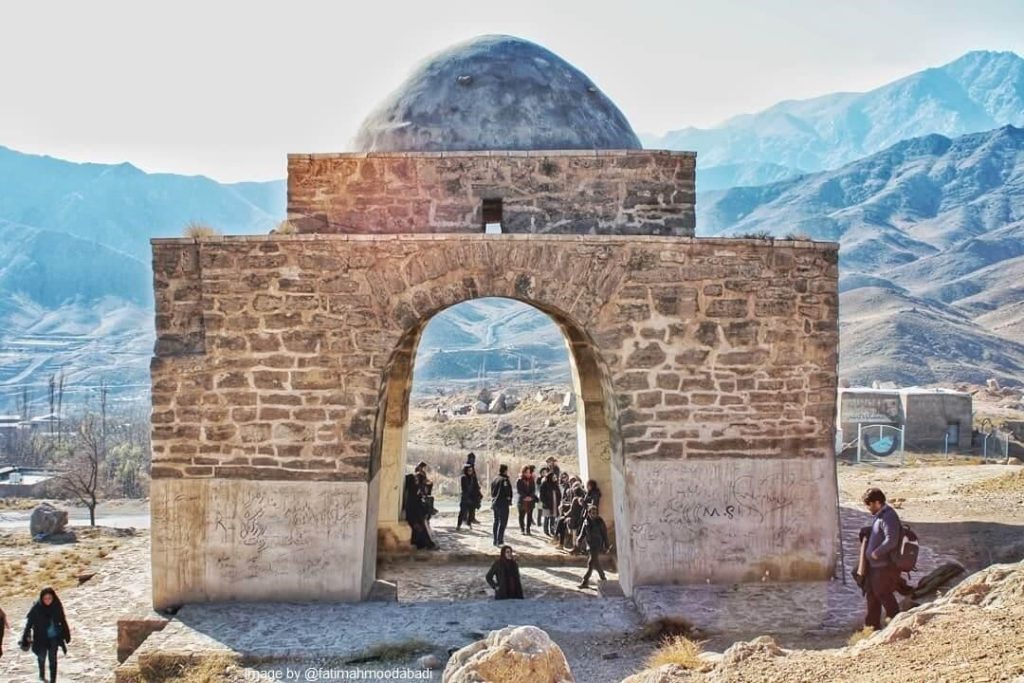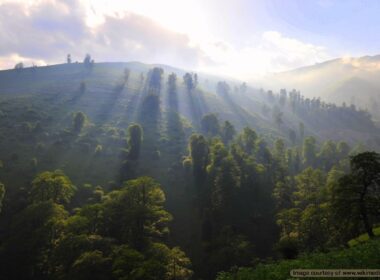
Niyasar is one of the ancient villages in the city of Kashan, also known as “Niasar” and “Niyastar”. Niasar village holds multiple natural and historical attractions. Among its historical sites, we can mention Niasar Fire Temple which is located near a spring called Eskandarieh (Alexandria).
The original name of this fire temple is Chahartaqi Niasar which is located on the rocky foothills of the Karkas (Vulture) Mountain. This building was added to the Iran National Heritage List in 1938 and is considered one of the must-visit Kashan tourist attractions.
History of Niasar Fire Temple
The Chahartaqi (four-arched) Niasar building is a very old structure that is a remnant of the Sassanid era. However, some researchers estimate the construction of this temple took place in the late Parthian period. Given the similarity of this fire temple to other buildings of the Sasanian period, It’s more likely that this building dates back to the Sassanid era.
It is said that Ardeshir Babakan or Ardashir the Unifier, the founder of the Sasanian empire, built the Niasar fire temple. He established this fire temple in Iran when the Sassanid kingdom was at the peak of its support for Zoroastrianism. This building is one of the most untouched examples of historical sites in Iran.
Features of Niasar Fire Temple

Because of its appearance, Niasar’s Chahartaq building was known as Chahar Darvazeh (gate) in the past. This building has an area of about 11 x 11 meters and its height is 11 meters. This fire temple is built with four identical square pillars with dimensions of 333 x 333 centimeters.
Each of these pillars is reinforced with another wide pillar with a width of 40-50 cm and a height of 65-83 cm. These sub-pillars are not present in the northern and western exterior walls. The mentioned walls of the fire temple have been leveled with the surrounding lands. This has blocked the northern and western entrances of the building.
There are traces of a dome over the roof of Niasar Fire Temple, which has been demolished in the past. During the reconstruction in 1955, a dome was built for the temple. This dome was designed by the General Directorate of Archeology of the Pahlavi government.
The dome is in the shape of eight triangles that are placed on a circle. The apex of the triangles is facing outwards. The dome has 9 openings.
Inside the Niasar fire temple is an area of about 614 x 614 centimeters. A circle with a diameter of 90 cm is placed at the center of the temple interior. It seems the brazier was located in this part of the building.
Applications of Niasar Fire Temple
According to the archaeological studies conducted on this fire temple, it is estimated that this fire temple was built for two purposes:
- The first use of the building is as a sun calendar. The openings on the dome of the fire temple mark the passage of years. These openings are used to determine the sunrise and sunset at the beginning and in the middle of each season.
- Another use of this building was as a place of worship. In the past, when the religion of the majority of people was Zoroastrianism, the Niasar fire temple was built as a religious site.
Construction Material and Decorations of Niasar Fire Temple

Limestone and plaster mortar have been used in the construction of Niasar fire temple. The lower part of the walls up to a height of 200 cm is laid with riprap. The top of the fire temple walls is built with finely cut cuboid stones.
According to the studies conducted on the site, it is believed that this fire temple had many decorations in the past. Among these decorations, we can mention the fine plasterwork under the vaulted entrance. The decorations are long gone now and the fire temple has a simple and humble facade.
In addition, old photos before restoration show that the exterior and interior of the fire temple bases were coated with custom plasterwork. No trace of painting can be seen on these plasters.
Visit Niasar Fire Temple in Kashan City
Niyasar village is a very beautiful village near Kashan City. Niasar fire temple is one of the famous tourist attractions of this village, which is located near the outskirts of the village. This fire temple has a charming design from the Sassanid period and attracts many tourists every year.
If you travel to Niasar village on an Iran tour package or by yourself, don’t miss visiting this building. Destination Iran invites you to visit this historic landmark in Niasar village.
Where is Niasar Fire Temple?
Niasar fire temple or Chahartaq Niasar is near Kashan City, 30 kilometers before Niyasar Village from the northwest of Kashan. This fire temple is located above the Eskandarieh Spring and near the Niyasar Cave. You can see the location of this square below:
Frequently Asked Questions About Niasar Fire Temple
If you cannot find the answer to your questions in the following, share your questions with us through the comments section of this post. We will answer them as soon as possible.
What were the applications of the Niasar Fire Temple?
Various uses have been suggested for this building, such as a wayfinding landmark, a memorial, a fire temple, and the graves of elders.
Is the Niasar fire temple listed on the Iranian national heritage list?
This building was registered as one of Iran’s national heritage sites on November 12, 1938, under the title of Niasar Fire Temple.
How does the sun calendar in Niasar Fire Temple work?
The building dome is designed so that the sunrise and sunset at the beginning and middle of each season can be seen from one of its openings. The temple’s accuracy in calendrical measurements is higher than other ancient time-measurement structures in the world which have higher margins of error. At the beginning and in the middle of each season, the morning sun rays shine on the bases of the building through the dome.
There are no other buildings around the Niasar fire temple, like other single Chahartaq buildings in Iran.
What are the unique elements in the design and architecture of Chahartaqi Niasar?
In terms of ancient architectural styles, the architecture of this building with the construction of mold-less arches, the interesting method of connecting the square base to the circular dome, its geometrical proportion, and unique symmetry are interesting and surprising.
What is a fire temple and why was it created?
Since thousands of years ago, Iranians considered fire, water, wind, and earth as sacred elements. They also believed the fire was a purifying element. Later, Zoroastrians built fire temples and used them as places of worship. Zoroastrians placed the fire in a special spot in their fire temples and performed their most important religious rituals and practices before the fire. Also, people used to take sparks of fire for their personal use.
How was the dome of Niasar Fire Temple built?
From the outside, this building looks like a cube with four wide portals. Its roof appears as the layer between the base and the dome. But from the inside, the dome is connected directly to the square walls that transform into a circle with gradual curvature. Only sedimentary limestone and plaster mortar have been used for its construction.














